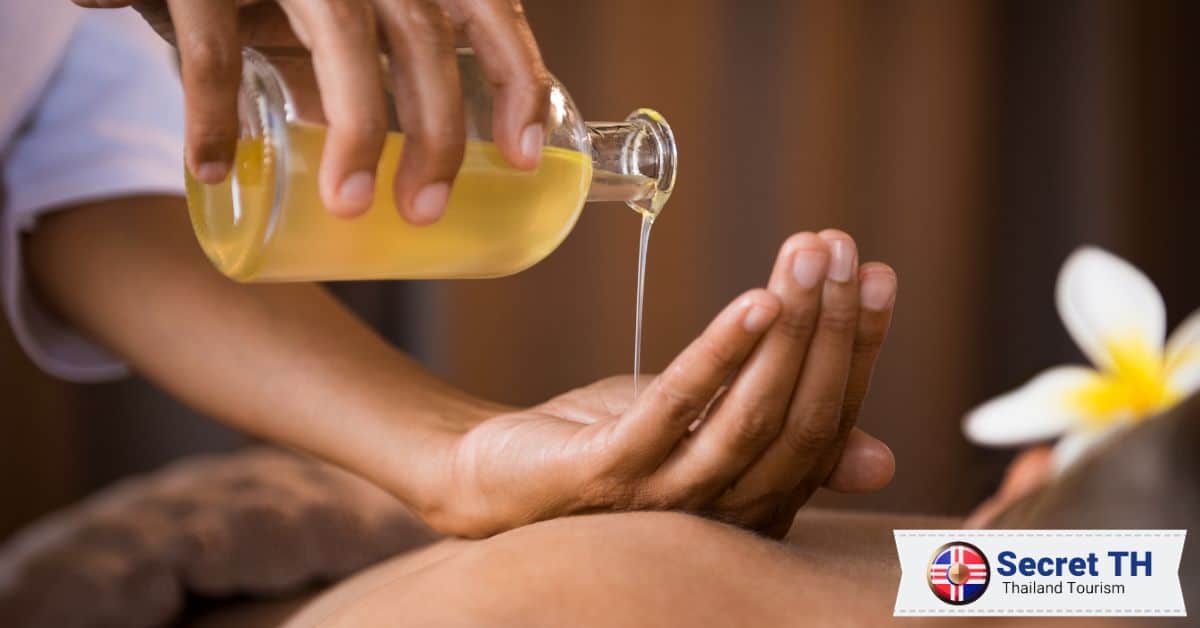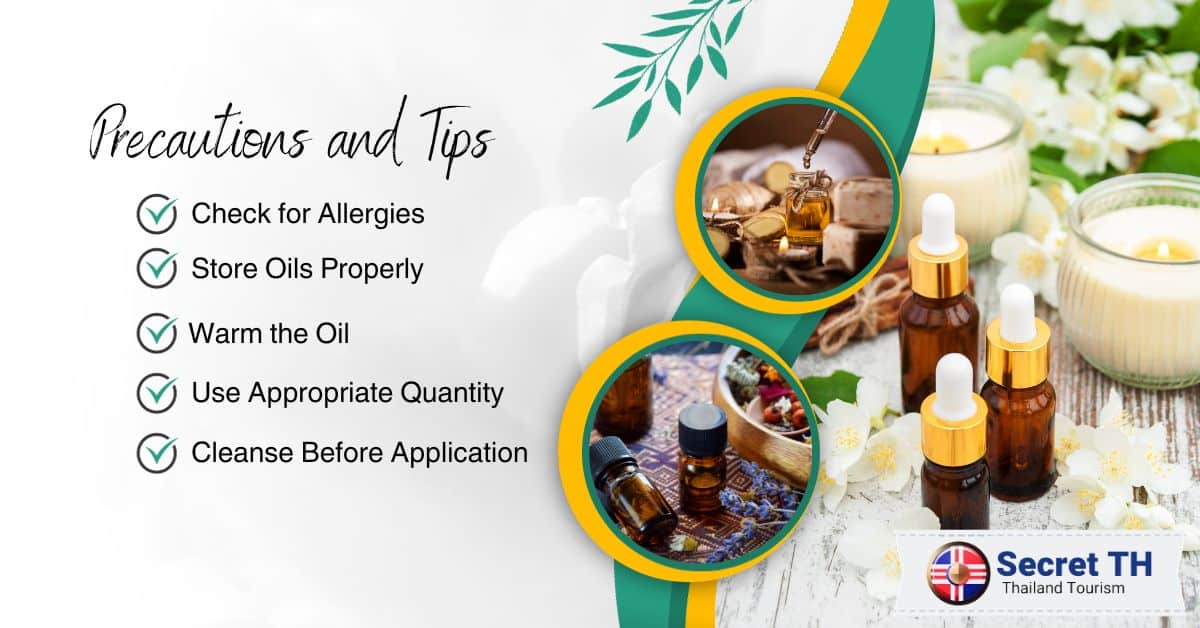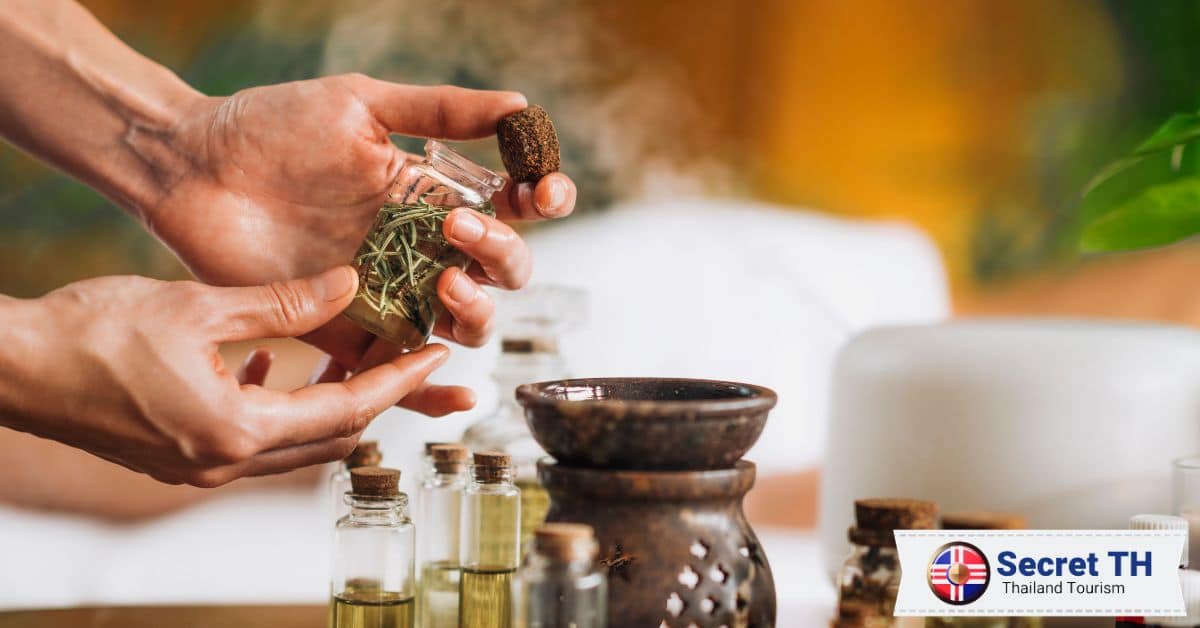Thai massage oil is a remarkable element of traditional Thai massages. It’s a blend of natural ingredients like lemongrass, plai, turmeric, and coconut oil. This oil soothes muscles, promotes relaxation, and imbues skin with a radiant glow. It’s an essential part of the sensory journey in Thai wellness rituals.
This blog post dives into the heart of Thai wellness rituals, particularly focusing on the magic potion that is Thai massage oil. Its enticing blend of natural ingredients, known for its therapeutic properties, offers an experience that transcends the physical realm, promoting relaxation and wellness. Join us on this journey as we delve deeper into the mystique of this radiant elixir.
History of Traditional Thai Massage Oils
Traditional Thai massage oils have a rich history dating back to ancient times. They were originally devised by monks in Thailand as a form of medicinal treatment and spiritual ceremony. Over the centuries, these oils have been refined and perfected. This results in the aromatic and therapeutic oils used in spas worldwide today.
The massage oils are typically made from a combination of natural ingredients such as coconut oil, lemongrass, and plai root. These ingredients were chosen for their various therapeutic properties, which include, but aren’t limited to, anti-inflammatory, antiseptic, and soothing effects.
The practice of using these oils for massage was initially restricted to the royal court of the ancient Siamese kingdom. However, over time, the knowledge of these oil-based massages spread throughout the country, becoming an integral part of Thai culture.
Today, traditional Thai massage oils continue to be a significant aspect of the country’s wellness industry, attracting health-conscious individuals from around the globe. The time-tested benefits of these oils, fused with the age-old art of Thai massage, create a truly unique therapeutic experience.

Benefits of Thai Massage Oils
Traditional Thai massage oils offer an array of benefits that enhance both physical and emotional well-being. These benefits make Thai massage oils an essential component in holistic wellness routines, offering a multisensory therapeutic experience steeped in centuries of tradition. Here are five notable advantages:

- Deep Relaxation: The aromatic properties of the oils have a calming effect on the mind, promoting deep relaxation and stress relief.
- Improved Circulation: When used in massage, the oils facilitate better blood flow and lymphatic drainage, contributing to overall health improvement.
- Muscle Pain Relief: The anti-inflammatory properties of certain ingredients, like plai root, make these oils effective in easing muscle tension and reducing pain.
- Skin Nourishment: Natural ingredients like coconut oil nourish the skin, leaving it soft, smooth, and hydrated post-massage.
- Enhanced Mood: The enticing aroma of these oils can uplift the mood and stimulate the senses, contributing to a heightened sense of well-being.
Different Types of Thai Massage Oils
Thai massage oils come in different variants, each with its unique blend of ingredients and therapeutic properties. These oils cater to different needs and preferences, enhancing the overall massage experience in their distinct ways. Below are some popular types of Thai massage oils:

- Lemongrass Oil: Known for its invigorating citrusy aroma, Lemongrass oil is a popular choice for Thai massages. Its antiseptic and antimicrobial properties make it excellent for promoting skin health. Its scent helps to alleviate anxiety and boost mood.
- Coconut Oil: Renowned for its nourishing properties, Coconut oil is ideal for massages aimed at skin hydration. Its antioxidant constituents provide anti-aging benefits, while its soothing aroma adds to the relaxation experience.
- Jasmine Oil: Jasmine oil is favored for its uplifting, mood-enhancing aroma. Often used in stress-relieving massages, its sweet, floral scent creates an atmosphere of calm and tranquility.
- Plai Root Oil: Sourced from the native plai plant, this oil is known for its potent anti-inflammatory properties, making it perfect for massages aimed at relieving muscle pain and tension.
- Lavender Oil: With its calming fragrance, Lavender oil is ideal for relaxation massages. Its soothing properties help relieve stress, promote sleep, and rejuvenate the mind and body.
How to Use Thai Massage Oils
Incorporating Thai massage oils into your wellness routine can transform your massage experience. Before beginning, ensure the recipient is comfortable and relaxed. Warm the oil slightly by rubbing it between your hands, then apply smoothly and evenly over the body. The specific techniques to use will depend on the desired outcome; long, sweeping strokes for relaxation, kneading, and pressing for tension relief.
Always be mindful of the pressure to ensure it’s comfortable for the recipient. After the massage, allow the oil to absorb into the skin for maximum nourishment. Remember, each oil has its unique benefits – choose one that caters best to your needs.

Precautions and Tips
Traditional Thai massage oils have a storied history and continue to hold a prestigious position in the wellness industry today. These oils, crafted from natural ingredients like coconut, lemongrass, and plai root, offer an array of therapeutic benefits, making Thai massage a unique, multisensory experience. The following will are essential precautions and tips to ensure a safe and enjoyable massage experience. Let’s journey into the world of Thai massage oils, their history, benefits, and uses.

- Check for Allergies: Before using any Thai massage oil, it’s crucial to ensure that the recipient isn’t allergic to any of its ingredients. A patch test on a small area of skin can help prevent any adverse reactions.
- Store Oils Properly: To preserve their therapeutic properties and aromatic quality, always store Thai massage oils in a cool, dark place. Airtight glass bottles are the best storage containers.
- Warm the Oil: Warm oil enhances the massage experience and allows the oil to be absorbed better. You can warm the oil by rubbing it between your palms before applying it to the skin.
- Use Appropriate Quantity: Using too much oil can make the massage slippery and less effective. Conversely, too little oil can cause discomfort due to friction. Therefore, apply just enough oil to allow smooth movements without losing grip.
- Cleanse Before Application: Ensure the recipient’s skin is clean before oil application. This not only enhances oil absorption but also prevents potential skin issues caused by massaging dirt or sweat into the skin.

Conclusion
The traditional Thai massage oils, with their diverse range of natural ingredients and therapeutic properties, offer a holistic wellness experience. These oils, developed through centuries of tradition, not only enhance physical health but also promote emotional well-being. Whether it’s to experience deep relaxation, improved blood circulation, pain relief, or skin nourishment.
Also, mood enhancement and the use of Thai massage oils can cater to a variety of needs. Their incorporation into your wellness routine can be a transformative and beneficial experience. However, it is crucial to always consider individual allergies. The proper storage, and appropriate use to ensure a safe and enjoyable massage experience.










